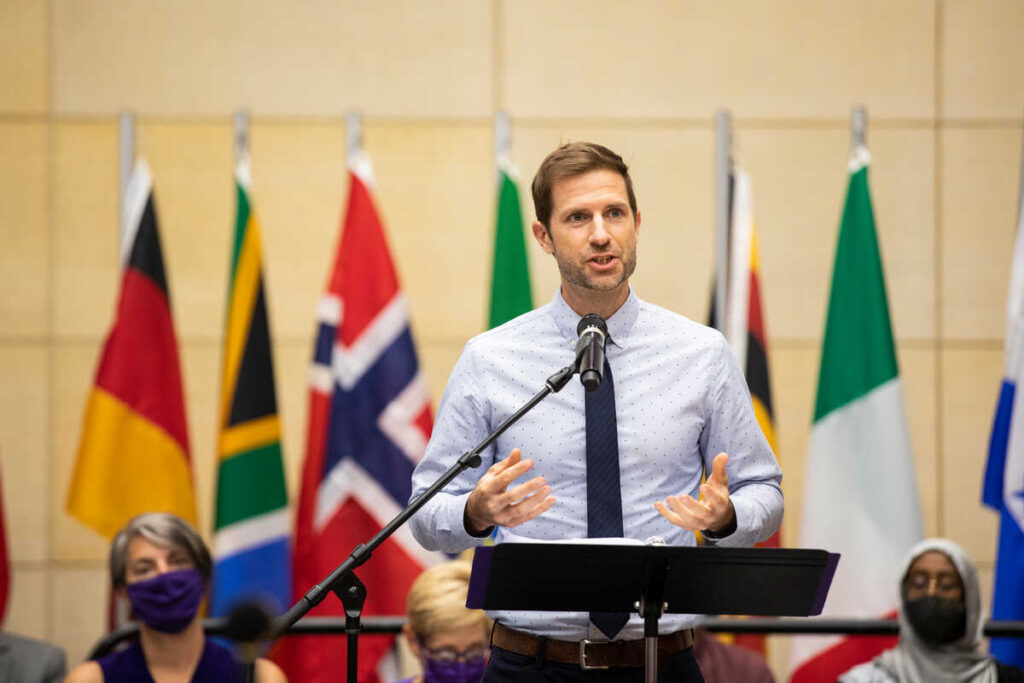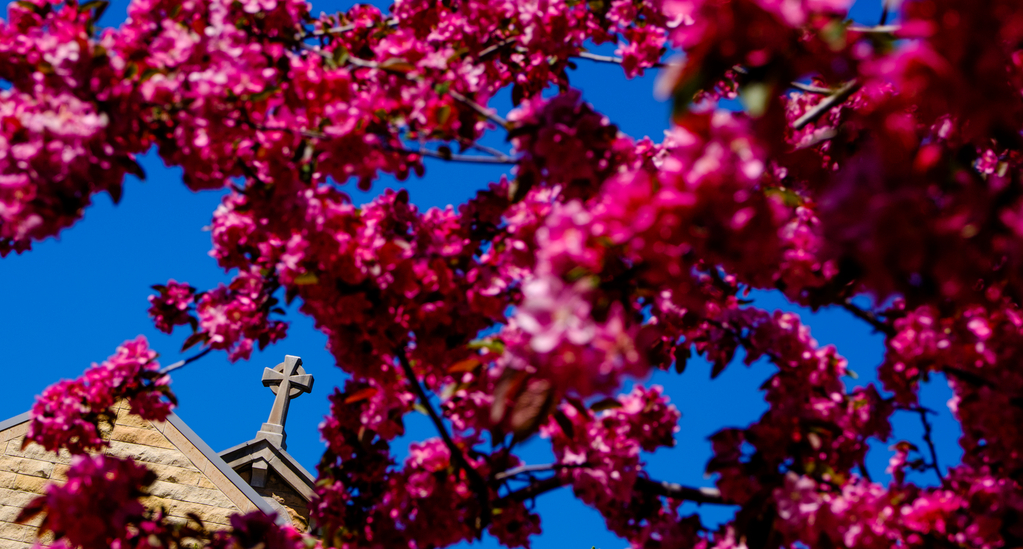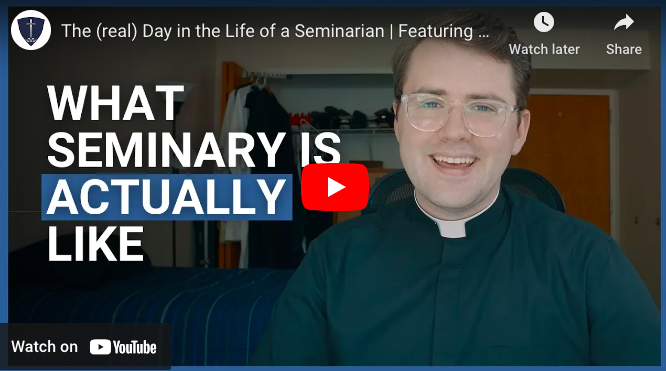Along the bustling thoroughfare connecting the northernmost residence halls to the rest of campus is a sign to pause, no blinking yellow light or yield sign necessary.
Traffic sometimes slows through this main access hallway in the Iversen Center for Faith, which now displays the first-ever exhibits for the new Hoedeman Gallery of Sacred Art. It is a space that Father Larry Snyder, vice president for mission at the University of St. Thomas, said celebrates both the artistic expression of different faiths and also the way the arts bring people together.
Until recently, the Hoedeman Gallery of Sacred Art walls were white and blank, Snyder said. “Now that the art is there, it's like the building has come alive, and the space has found its purpose.”
Snyder said that although St. Thomas is a Catholic university, many faiths, religions and traditions are represented and celebrated on campus. The Hoedeman Gallery of Sacred Art itself is a physical representation of that. The gallery’s three alcoves display three separate exhibits, two of which will rotate on a biannual schedule.
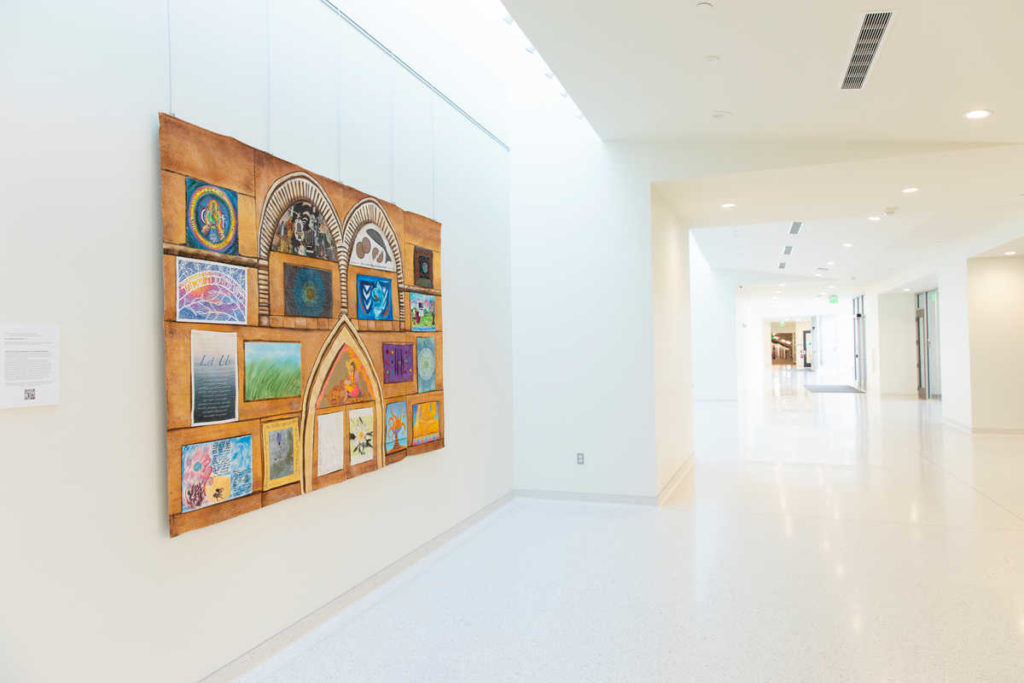
Collaborative artwork "The Interfaith Prayer Wall" hangs in the Hoedeman Gallery of Sacred Art in the Iversen Center for Faith on March 3, 2021, in St. Paul. (Mark Brown/University of St. Thomas) 
Signage for the Hoedeman Gallery of Sacred Art honoring Fred and Mary Hoedeman is revealed during a private tour through the Iversen Center for Faith on the St. Paul campus on Nov. 6, 2020. The art installation was added in 2021. (Liam James Doyle/University of St. Thomas) 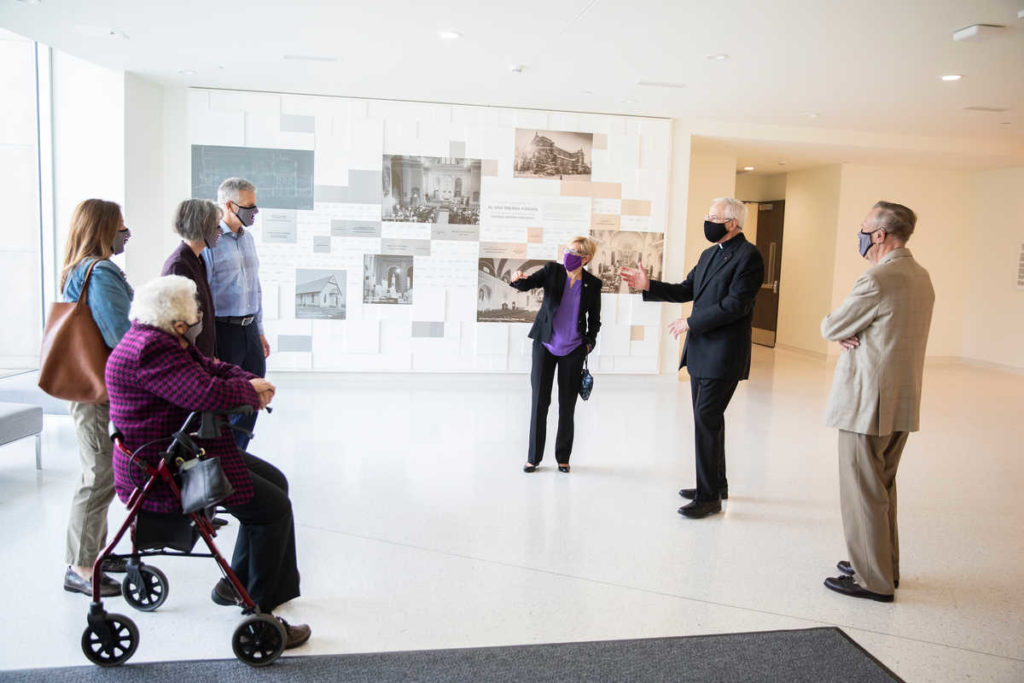
University President Julie Sullivan speaks to Fred and Mary Hoedeman and their family as they are given a private tour through the Iversen Center for Faith on the St. Paul campus on Nov. 6, 2020. The art installation was added in 2021. (Liam James Doyle/University of St. Thomas) 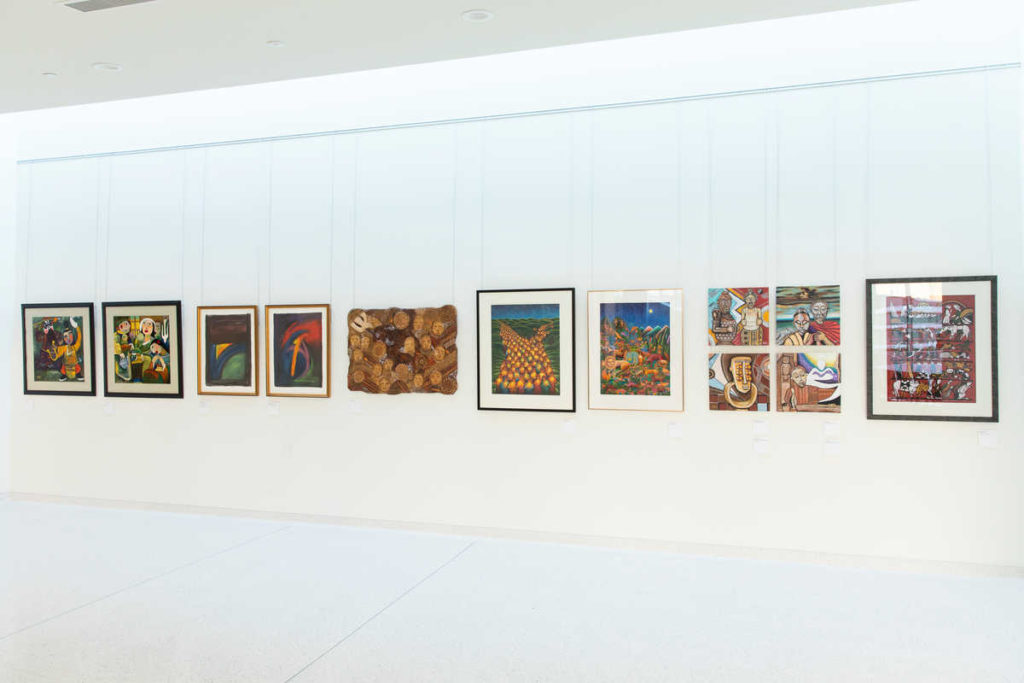
Artworks from a variety of artists hang in the Hoedeman Gallery of Sacred Art in the Iversen Center for Faith on March 3, 2021, in St. Paul. (Mark Brown/University of St. Thomas) 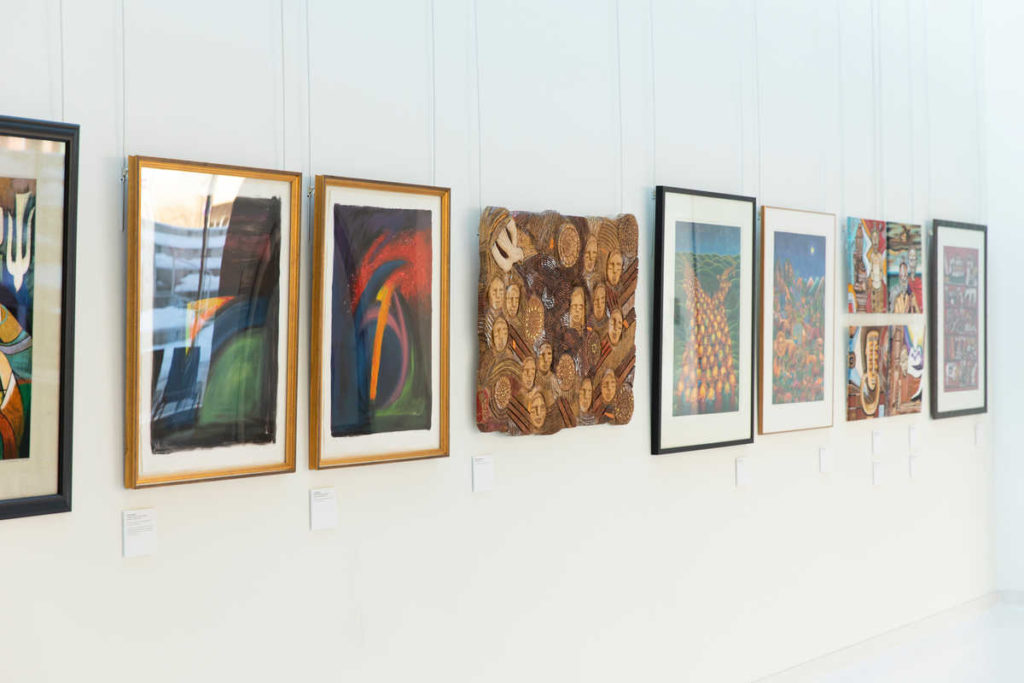
Artworks from a variety of artists hang in the Hoedeman Gallery of Sacred Art in the Iversen Center for Faith on March 3, 2021, in St. Paul. (Mark Brown/University of St. Thomas) 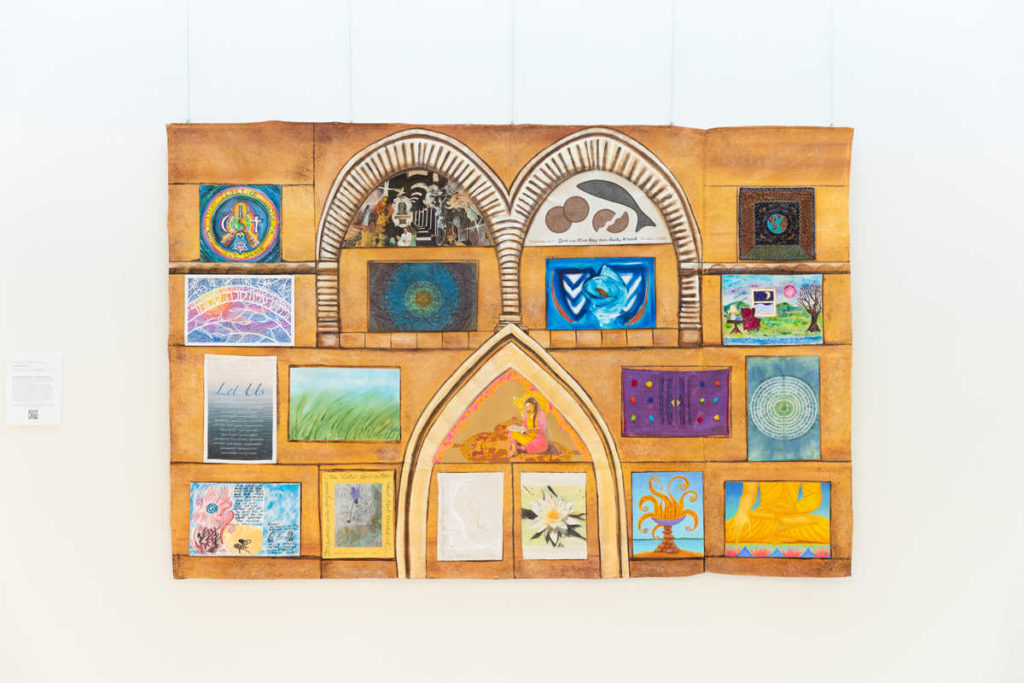
Collaborative artwork "The Interfaith Prayer Wall" hangs in the Hoedeman Gallery of Sacred Art in the Iversen Center for Faith on March 3, 2021, in St. Paul. (Mark Brown/University of St. Thomas)
The first, and northern most alcove displays the “The Interfaith Prayer Wall,” a collaboration of Jewish, Christian and Muslim artists. The featured artists are all women who take part in the Interfaith Artist Circle, a group of 19 Twin Cities-based artists who regularly study, pray and create art together. Artist Aimee Orkin, connected the individual pieces into one via architectural elements modeled after Solomon’s temple, the Church of the Holy Sepulchre and the shape of a prayer niche, or mihrab, located in Iran.
Their art comes together at St. Thomas, in the Hoedeman Gallery of Sacred Art, but also in a virtual gallery, Visual Prayer, sponsored in part by the Jay Phillips Center for Interreligious Studies at the University of St. Thomas. At 7 p.m. on Thursday, March 18, three of these artists – Renanah Halpern, Hend Al-Mansour and Beth Andrews – will headline an artist’s salon in St. Thomas’ annual Sacred Arts Festival. Moderated by St. Thomas theology professor Corri Carvalho, the artists will share the roots and impact of their work.
The second rotating installation is a collection of Christian art from around the world, including Japan, Central and South America, Africa and beyond. On loan from the Basilica of St. Mary in Minneapolis, the pieces represent the diversity of the Christian tradition.
Snyder said St. Thomas is planning two educational events this spring, including a conversation with the Basilica’s director of liturgy and sacred arts, Johan Van Parys.
The Interfaith Prayer Wall will be on exhibit at the Hoedeman Gallery of Sacred Art through April and the Basilica collection through August. The gallery’s normal schedule, however, will align with the academic schedule with new exhibits planned for Sept. 1 and Feb. 1.
“That’s the beauty of it,” Snyder said. “It gives us the opportunity to really expose the university community to a lot of different styles of art," Snyder said.
However, common ground is revealed in the very diversity of the art, Snyder said. Whether the same words or rituals are used, Snyder said he experiences common ground in realizing that all of the spiritual beliefs and practices represented in the gallery are designed to bring us closer to God and the common good.
“In the end, we as Catholics, we're not the only ones who have the market on the common good,” Snyder said. “Everybody should be committed to the common good and whatever it takes for us to work together to find that. I really think where the students learn how to do this, where do they practice it, is a university."
Since the art was installed, Snyder said he’s seen students step out of the hallway traffic, sit down and take in the art. Classes, too, have met in the gallery for discussion and reflection. Those moments, he said, bring the mission of St. Thomas and the gallery to life.
“Our university is this incredible training ground for how you're going to live the rest of your life,” Snyder said. "We are always going to run into people who are of a different race, who have different beliefs. So here we learn how to interface with them in a way, that is positive and builds up the community.”

